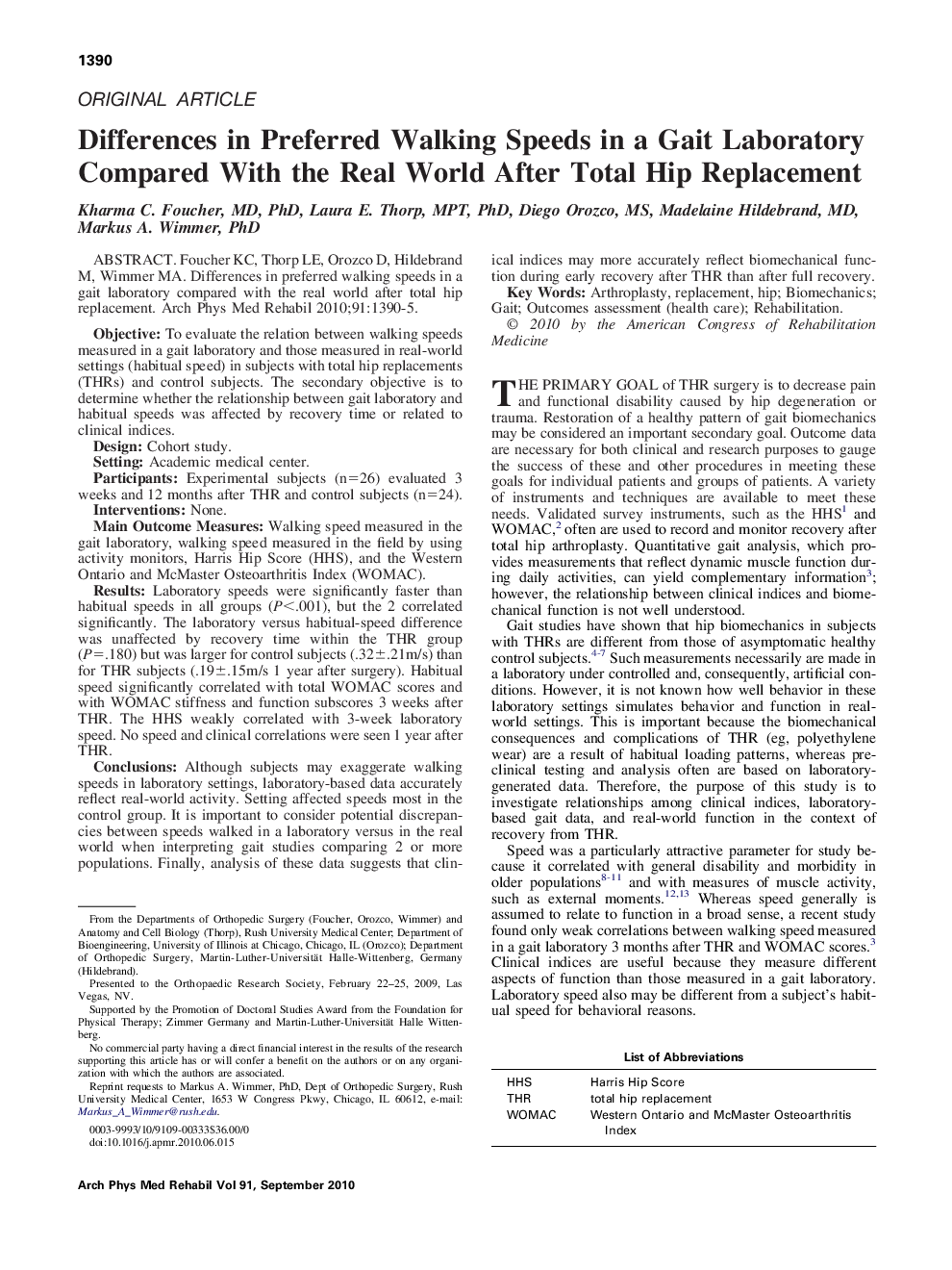| کد مقاله | کد نشریه | سال انتشار | مقاله انگلیسی | نسخه تمام متن |
|---|---|---|---|---|
| 3450518 | 1595748 | 2010 | 6 صفحه PDF | دانلود رایگان |

Foucher KC, Thorp LE, Orozco D, Hildebrand M, Wimmer MA. Differences in preferred walking speeds in a gait laboratory compared with the real world after total hip replacement.ObjectiveTo evaluate the relation between walking speeds measured in a gait laboratory and those measured in real-world settings (habitual speed) in subjects with total hip replacements (THRs) and control subjects. The secondary objective is to determine whether the relationship between gait laboratory and habitual speeds was affected by recovery time or related to clinical indices.DesignCohort study.SettingAcademic medical center.ParticipantsExperimental subjects (n=26) evaluated 3 weeks and 12 months after THR and control subjects (n=24).InterventionsNone.Main Outcome MeasuresWalking speed measured in the gait laboratory, walking speed measured in the field by using activity monitors, Harris Hip Score (HHS), and the Western Ontario and McMaster Osteoarthritis Index (WOMAC).ResultsLaboratory speeds were significantly faster than habitual speeds in all groups (P<.001), but the 2 correlated significantly. The laboratory versus habitual-speed difference was unaffected by recovery time within the THR group (P=.180) but was larger for control subjects (.32±.21m/s) than for THR subjects (.19±.15m/s 1 year after surgery). Habitual speed significantly correlated with total WOMAC scores and with WOMAC stiffness and function subscores 3 weeks after THR. The HHS weakly correlated with 3-week laboratory speed. No speed and clinical correlations were seen 1 year after THR.ConclusionsAlthough subjects may exaggerate walking speeds in laboratory settings, laboratory-based data accurately reflect real-world activity. Setting affected speeds most in the control group. It is important to consider potential discrepancies between speeds walked in a laboratory versus in the real world when interpreting gait studies comparing 2 or more populations. Finally, analysis of these data suggests that clinical indices may more accurately reflect biomechanical function during early recovery after THR than after full recovery.
Journal: Archives of Physical Medicine and Rehabilitation - Volume 91, Issue 9, September 2010, Pages 1390–1395